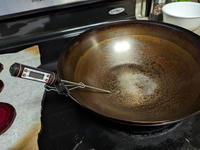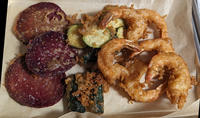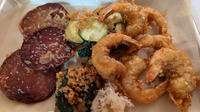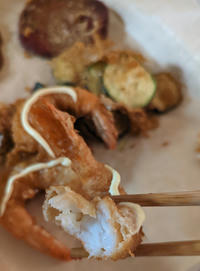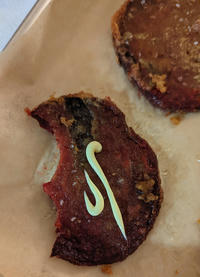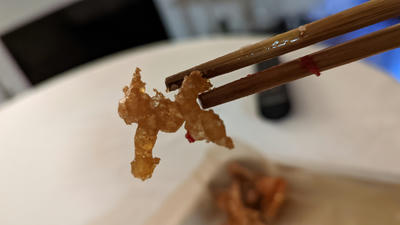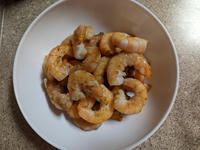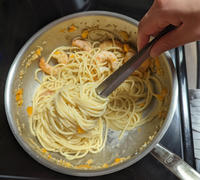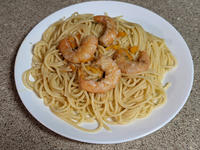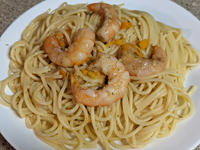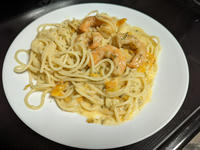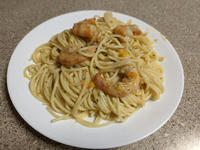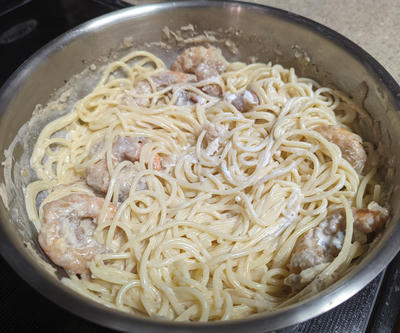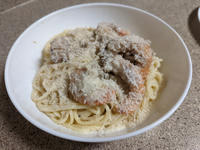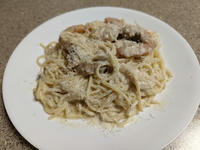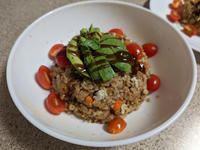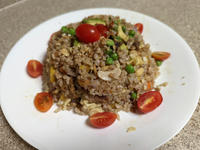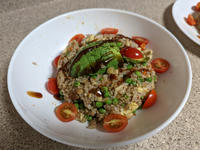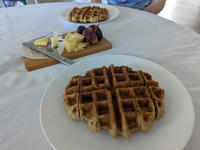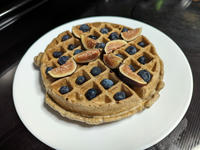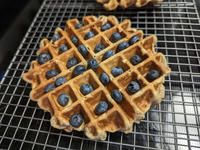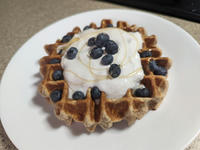Labor Day Week
Heat Wave🔗
Heat wave caught the tail of summer just about the time you started doubting if the purchase of AC is worthwhile. The answer is a big YES. Probably because it's so seriously hot this time that the city put on red alert way ahead. When we first got the broadcast message, it was nowhere close to hot. Holding a hot coffee cup to fend off morning chill, I was thinking of seizing the nice weather before the actual red alert for a ride. It turns out to be a super timely call. It was an excellent day to be out riding around in the woods or by the water. Apparently many thought the same as us since it's probably the day we met most cyclists, both in peloton and by individual. It was extra exciting for me because i) I've finally recovered enough to be able to ride again and it feels so nice to be back outside; ii) My late birthday present finally arrived. It's the limited edition Liv team jersey from Tour de France Femmes. Sooooo cooool!
That's the last day before the heat wave hits. For the rest of Labor Day weekend and the following week, we bunkered at home with AC humming in the background, keeping in mind to reduce energy consumption. Somehow it feels like a spaceship vibe, air recycler humming and energy conservation. Or maybe it's because I've been binging Orville in the meantime. ¯\(ツ)/¯
Given how precious cool air is in 40C, meals for this week follow the goal of minimum heat emission and low effort input, aka quick and easy.
The only exception is the night of the bike ride. It hasn't got hot yet and I got energized from the ride. Inspired by the 2 lb fresh jumbo shrimp, the ambitious idea of tempura crossed my mind. Every once in a long while, I'd feel deep-frying is doable and convince myself wrong afterwards. We had some pro-looking frying station setup at the beginning. I even MacGyvered a smart makeshift to monitor oil temperature. Regardless, soon all fell into hectic juggling and oily spraying.
I wouldn't bother you with details of how we tempura. All I can say is that unlike all the other cooking I normally do, deep-frying at home is highly demanding, both concentration-wise and physical-wise. So don't attempt it unless you are extra ambitious.
Probably due to the extra hard work, it feels extra rewarding when we finally get to enjoy the final platter. I know it doesn't look like the ones in the restaurant. There are a couple of mistakes like using too little oil and batter too thin etc. Nonetheless, despite the look they are all very tasty.
One upside of our amateur tempura is to amplify the ingredient's true flavor and texture with minimal interference. Shrimps are mega tender and tad sweet, both signs of fresh caught. Zucchini gets super creamy. Now I understand why Spaghetti alla Nerano uses fried zucchini. With the bare minimum tempura shell, it’s like biting into a hot pocket of luscious zucchini sauce. Beetroot is juicy and tender. When coated with olive oil, earthiness is tamed and transformed to a subtly sweet note with a full body aroma.
Look what we found, a doggie tempura!
Shrimp Pasta🔗
As you may have noticed, I've been trying out a variety of protein recently, mostly to get a more balanced diet. So there are lots of first timers. I've never bought shrimp before. Let alone cooking them. Shrimp was a regular growing up, a freshwater kind called "chicken tail" by literal translation. But somehow it's been forgotten since I came to the US. Never been part of the diet and rarely ordered in the restaurant. However, this first attempt completely changed my mind.
Shrimp is a gem. Aside from the superior nutritional value of high protein and low fat, it's sooooo easy to prepare and cook. Let me elaborate. i) It cooks in no time. Well, that's figurative speaking. In practice, once it hits the hot pan, it's done in like 2min. That brings to ii), It's very easy to judge doneness. Unlike most meat you need to check if internal temperature reaches safety value to call it done. Some are very sensitive to overcooking. So it's tricky to get it right. For shrimp, if it looks done, then it's done. Timing couldn't be easier. Once it turns pink, get it out. The fast cooking makes seasoning super simple. iii) There is no preconceived planning required. No need to season ahead. As shrimp has the natural sweet taste, minimal seasoning at the end like a pinch of salt or squeeze of lemon is more than enough. If using it as topping, no additional seasoning is needed, whatever sauce comes with the dish will be its seasoning, just use a matching flavor profile, like something citrusy or herby.
I batch sautéd the rest of the shrimp and used them in three pastas with different sauces. With the ready-to-go shrimps, pasta comes together super fast using a one-pan trick. Get just enough water to boil pasta (1000g water for 350g pasta) and build the sauce in the same pan. When pasta approaches Al-dente, lower heat and start adding cheese, seasonings, toppings etc. This gives sauce time to thicken up and pasta to absorb sauce. The final product is very well-combined pasta sauce unison, pasta coated with thick luscious sauce.
The three sauces are lemon tomato, tomato cream and cream. As you can see, it's a transition from light citrusy style to creamy Afredo style. Anywhere in between works nicely.
- Lemon tomato - a light and bright sauce. Started with the shrimp sauté pan. Used juice of 1 lemon to collect fond. Low heat to turn diced heirloom tomato into sauce. All aromatic in dried form, onion, garlic, parsley. Finish with a knob of butter. Used pasta water to adjust final consistency. Very refreshing. Imagine peak summer tomato farm meets oceanfront fishing village.
- Tomato cream - a bright and luscious sauce. Tomato part is the same as above. Cream part is from blended cottage cheese. Think of it as slightly savory yogurt. Unlike cream, it's extremely light, low in fat and high in protein. It usually comes in curds. Recently I discovered that if you blend it to silky smooth, it becomes a great sauce builder. The blended cottage cheese has a mega emulsifying power that turns any liquid to luxurious sauce. Consider the cream part is usually done by heavy cream or butter or both, this is a way healthier option. You don't have to throw in a stick of butter to get this perfect creamy consistency. Just a big spoonful of cottage cheese. A protein boost instead of a fat bomb. Used a one-pan trick. Build the sauce in the same pan for cooking pasta. Drain off excess pasta water 1min before it's done. There should still be plenty of pasta water in the pan. The exact amount is more by experience. It's always safe to save pasta water in a bowl if you are not sure. Turn heat to low. Add in tomato and stir until it's soft. Turn off heat. Add in cottage cheese and stir until creamy sauce is coated on pasta.
- Cream - a light alfredo sauce. The simplest of the three. Turn off heat 1 min before pasta is done. Drain off excess pasta water. Note that it needs more pasta water than the other two as cream based sauce thickens up more than tomato base sauce. Blended cottage cheese straight into the pan. Along with some acidic stuff if you have at hand, e.g. sauerkraut, pickles or just vinegar, to balance the richness. Stir as usual. Finish with black pepper and shaved parm. Alfredo doesn't have to be guilty. It's creamy and rich in flavor, not in fat. Make friends with blended cottage cheese. May the cream be with you.
Sausage Fried Rice🔗
Fried rice is on top of the list when it comes to quick and easy. It's on the Perato front of highly satisfying and low effort. No surprise it gets us through the hottest days. For the rice, I always make it a bit fancy. Nuts, dried fruit, ginger, or whatever treasure I find in the pantry that can boost flavor. This time we happen to have diced carrots ready. So I cook them with rice. Along with cashews as always. Carrots have natural sweetness that seeps into rice, giving it additional flavor. Both carrots and cashews get soft during cooking, adding nice texture variance.
As we know, fried rice is the job for leftover rice. But what if I want fried rice today? Well, I was trying to rush it on the same day. Cooking rice during the day when there is no power restriction and use it at night. My observation is that same day rice still holds quite some moisture that's not ideal for stir fry. It gets clumped together instead each rice granule separate with a sheen of oil coating. Flavor wise is the same tasty. Just not texture kinda soft and mushy.
- Same day rice - Top with avocado with Japanese bbq sauce. Suddenly it feels like fried rice sushi.
- Second day rice - It's so much easier to work with. Leftover rice is the best RightDown➘
Waffle Bread🔗
Waffle iron is a very heat contained device. It doesn't radiate additional heat to raise ambient temperature. That's why it's ideal for a closed AC room. I did a bold experiment. Use it on almost bread dough like batter. Guess what, it totally works. You'd get a waffle shaped bread with crusty crust and airy crumb. Check every box of bread. Just in the fun waffle shape. Cut it along the grid. The cut side is perfect to spread butter on or stack a slice of cheese with.
As far as a 30min brunch with no cooking, no heat, no dish, you can't beat waffles with fruit and cream. It's our default for hot day lunch.
A: It's a thiccck waffle, gotta bring out the big gun.
YY: more blueberries?
A: Ice cream. Oh, yeah!
For a healthier cream topping, I made my own coconut yogurt! Another proud MacGyver. It's fool-proof. Using the magic of probiotics, you can turn the last spoonful of yogurt into a full jar. All you need is a little bit of corn starch, some full fat milk, and patience.
To make ~500ml of yogurt
- 1 tsp cornstarch
- 1 big spoonful of any yogurt
- 400ml full fat milk
Get a small pot, add in corn starch and some milk, stir till no lumps. Heat it up till 180F. This step is just to cook corn starch. Mix yogurt starter with some milk till no lumps. There are three liquids now. i) heated milk with corn starch ii) milk with yogurt starter and iii) the rest of the milk. Now get a mason jar for cultivation. Pour in i) and iii), measure the temperature, the goal is to get it around 120F. Usually hot i) and cold iii) will get you somewhere around there. If it's higher, just let it cool down. If it's lower by not too much, you can just proceed. Once the temperature is good, add in ii). Seal the jar and submerge it in hot water. Usually I get a big pot and fill it with hot tap water. Put the entire pot in a slightly warm oven. You can achieve it by either turning on the oven light or turning on the oven for just 1 min (don’t forget to turn it off). At first glance it looks like quite some steps. Once you've done it, you will see it's 15 min active work with only 1 small pot of dish. Now you let it cultivate in the oven for 12 hrs give or take. And then transfer to the fridge for another 12 hrs to set. Viola, you just made your own yogurt.

